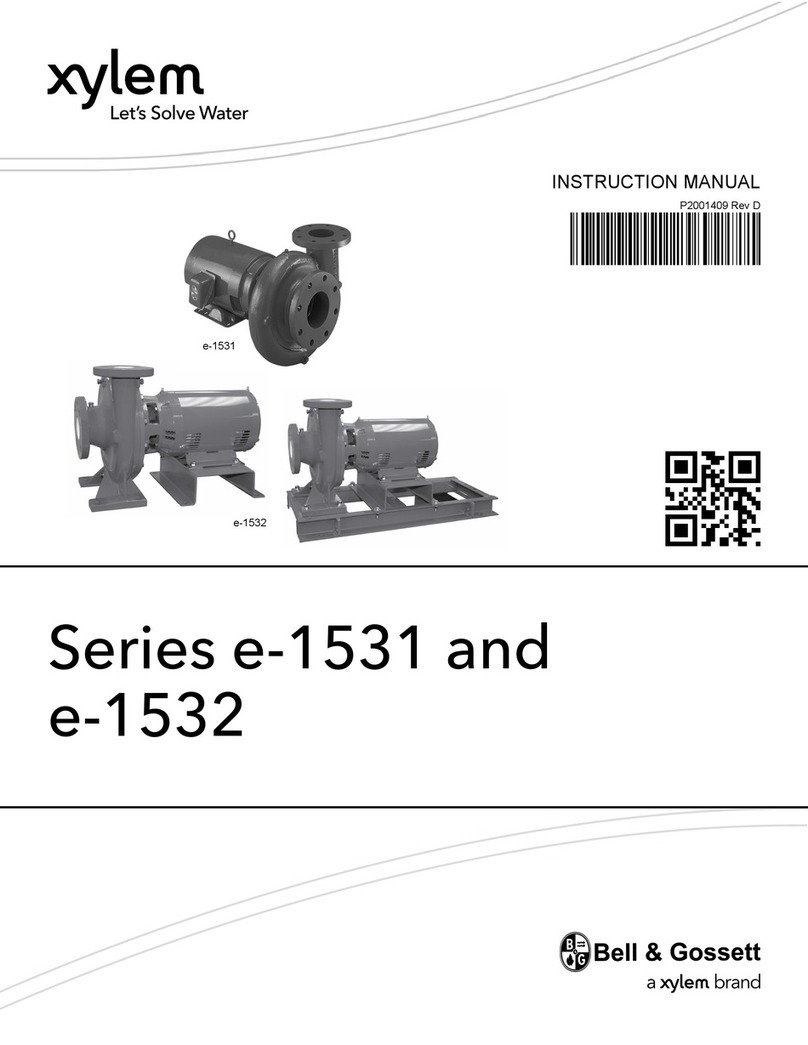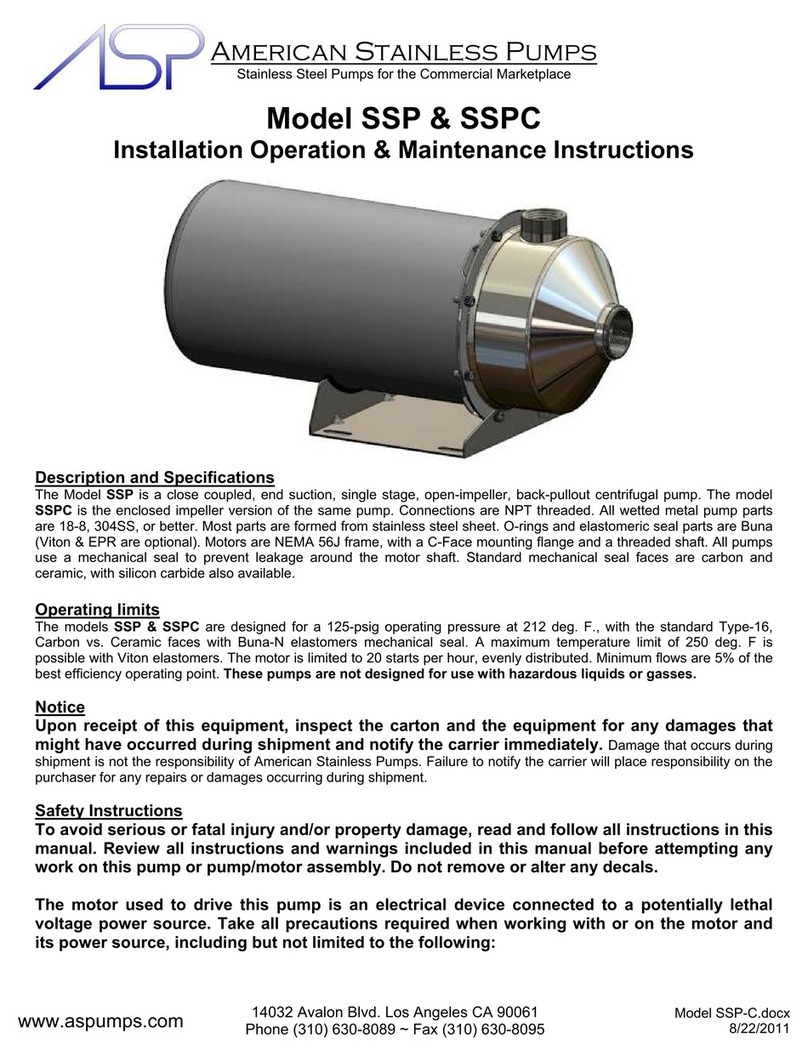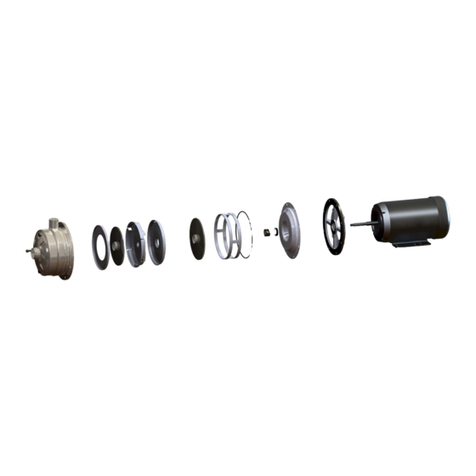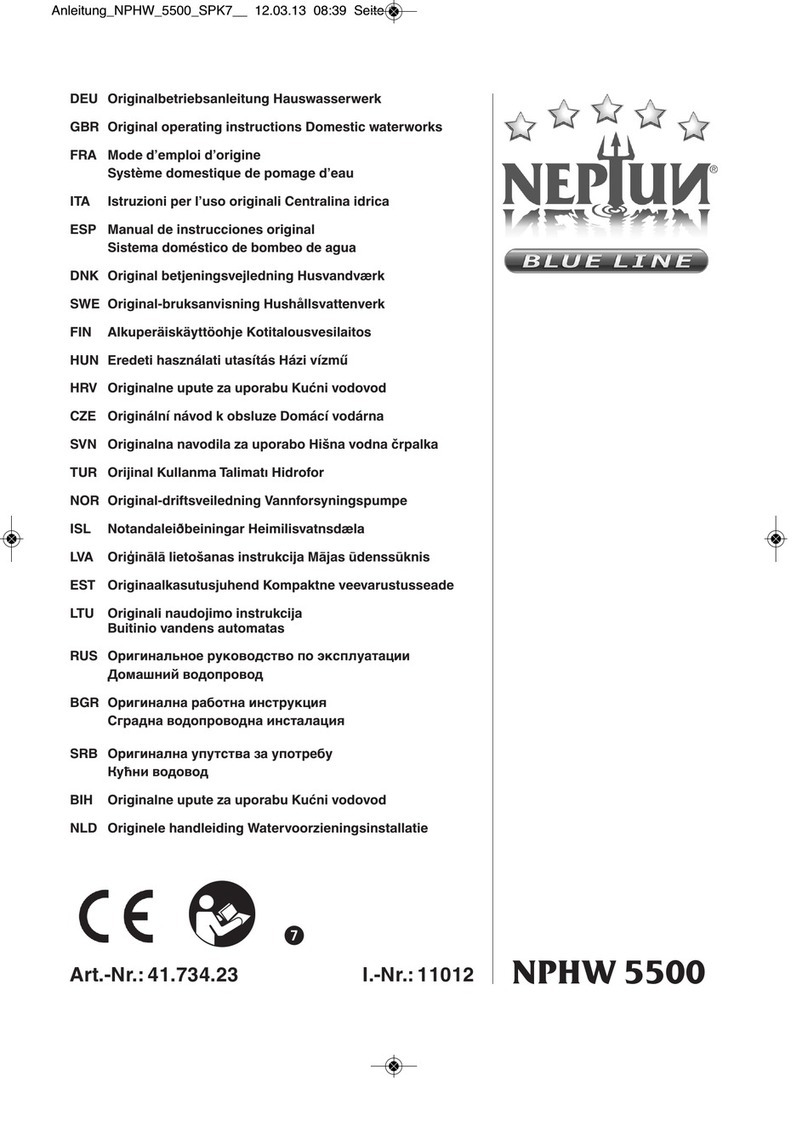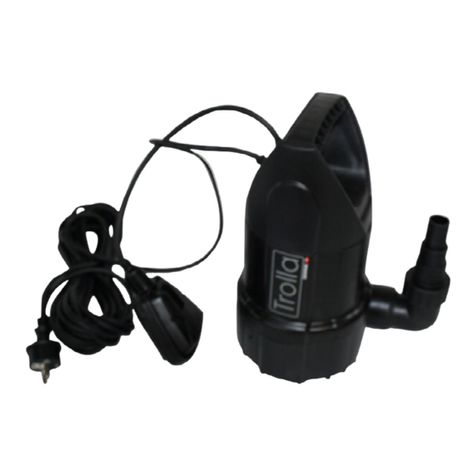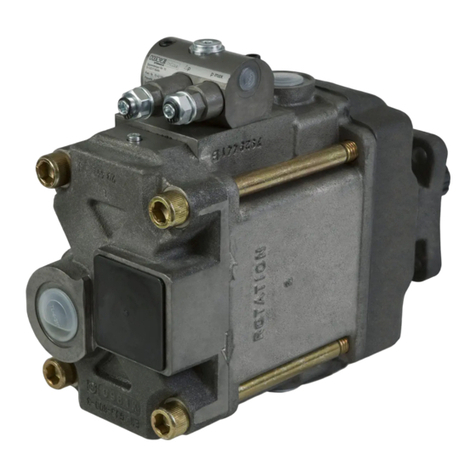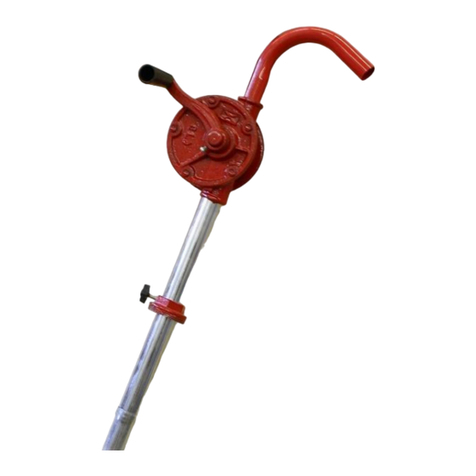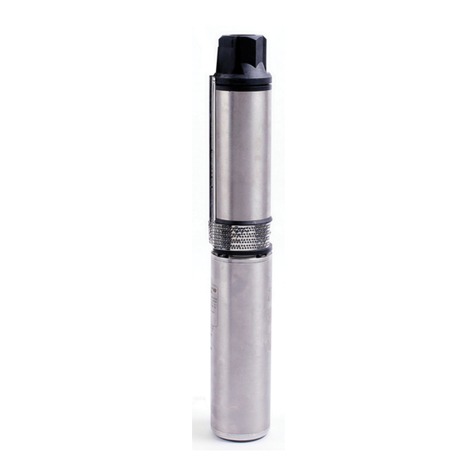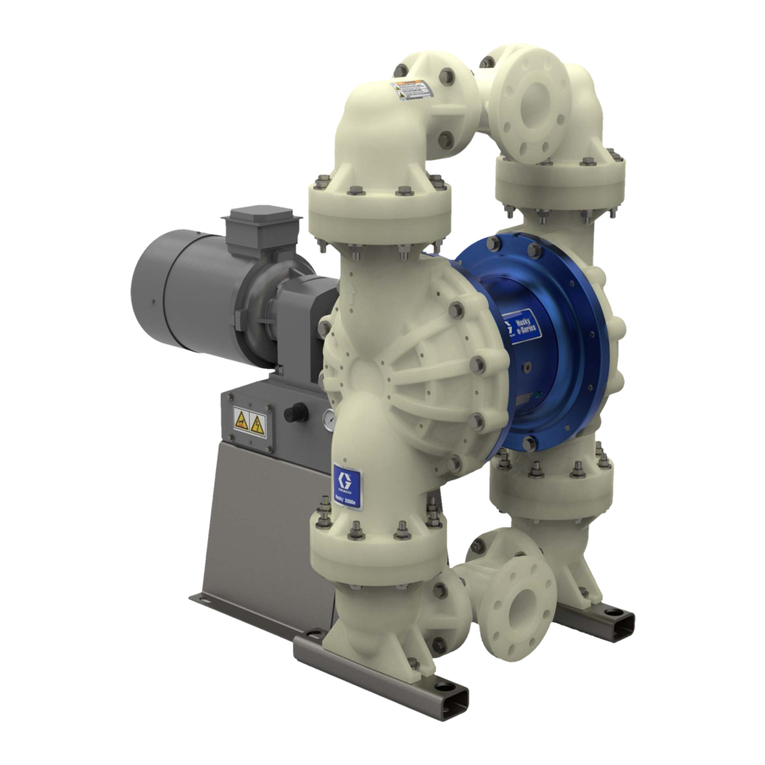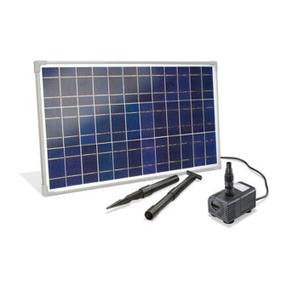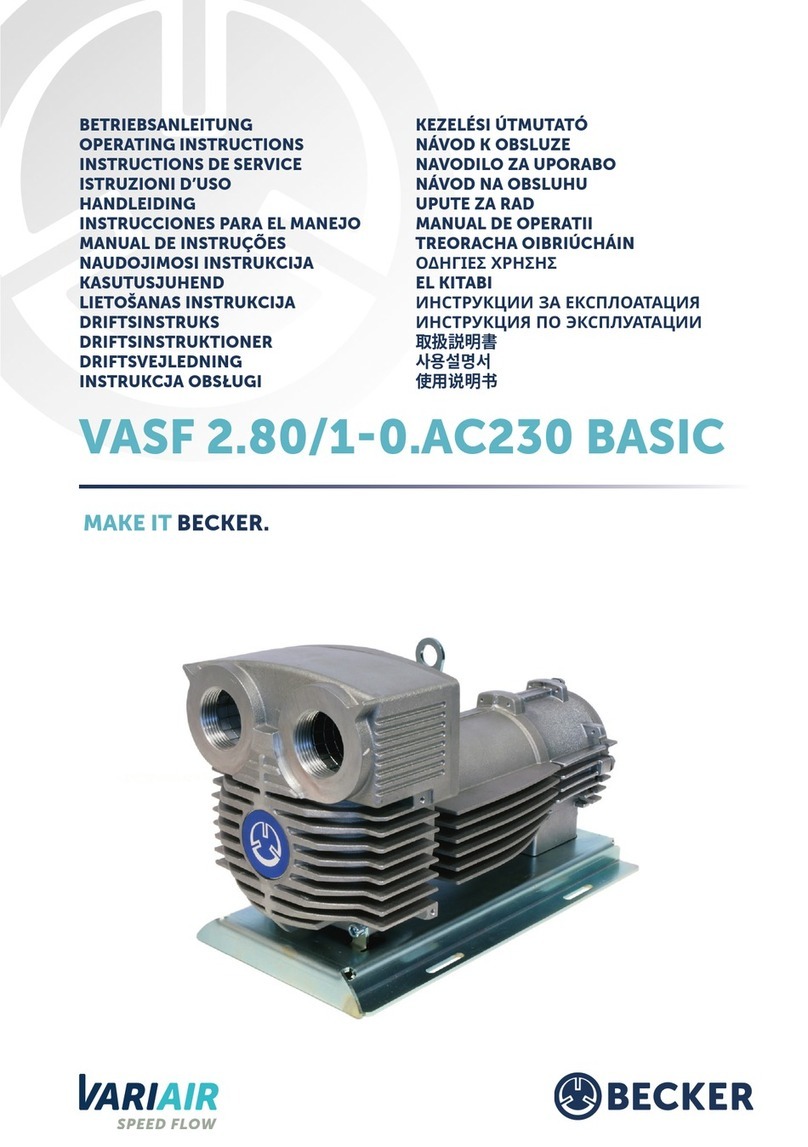
Disassembly: Disconnect and lockout the electrical power before attempting any disassembly.
Casing may contain hazardous fluids. Drain and flush and take necessary precautions.
It is not necessary to remove piping from the case to disassemble. Pump is a back pull-out design and unless casing
needs to be repaired or replaced, it can stay in place during servicing.
1. Close all valves and drain pump and pipes and flush if necessary.
2. Remove any motor hold down bolts.
3. Remove the four (4) case bolts (Item 7CS) with a 3/8” Allen wrench.
4. Pull the motor and pump internals back out of the case. Remove the case O-Ring and inspect for damage or
hardness. Remove the plastic spacers from the case bolts so they don’t get lost. You will need these spacers later.
5. If the motor is a three-phase motor, a locking screw is used to prevent the impeller from unthreading if started
in the wrong direction. The locking screw is installed with removable Locktite to prevent it from coming out during
operation. The locking screw may have left hand threads or right hand threads depending upon the motor manufacturer.
There should be a label on the pump case indicating the handedness of the locking screw. The screw can be removed
with a 1/8” Allen wrench. Call the factory if you are not certain of the handedness of the locking screw.
6. Remove the impeller by turning the impeller counterclockwise (when looking at the impeller from the pump end)
while holding the motor shaft. It may be necessary to remove the motor shaft cover plate in the center of the rear of the
motor to get access to the shaft. Using a screwdriver, wrench or vise grips, depending upon the motor manufacturer,
hold the shaft tightly against rotation while turning the impeller. Do apply any heat to the components.If you are
unable to hold the shaft in this manner, remove the rear motor housing and grip the motor shaft with vise grips or other
similar device (do not hold shaft where bearings will mount).
-It may be easier to remove the impeller using a screwdriver and a hammer, placing the screwdriver on the impeller vane
and striking a blow with the hammer to unscrew the impeller. The trick is to strike the impeller firmly enough to start the
unscrewing process, but not so hard as to damage the impeller. There is a video link on our website under Products -
Impeller Removal.
7. There may are spacers between the impeller and the motor shaft shoulder. These spacers locate the open
impeller vanes close to the case for efficient operation. Measure the thickness of this stack of spacers for future
reference. Do not lose these washers. You will need them for reassembly.
8. Remove the rotating element of the mechanical shaft seal. This element is held in place by the impeller only. If
the rotating element does not come off easily, it is stuck to the shaft. Use channel lock pliers or a screwdriver to pry the
element off the shaft.
9. Remove the seal plate. It should come off without force. If you plan to replace the stationary seat, you will need
to press it out from the back. Do not push with your finger as you will probably cut it on the edges of the seal plate when
the seal pushes out.
10. If the motor comes with a deflector, the deflector should be left in place or cleaned and replaced.
Assembly or Reassembly
-Assembly of the pump and motor may be easier when the motor is standing shaft up so that parts do not fall off.
-It is considered good practice to replace the mechanical seal and o-rings whenever you have to disassemble the pump.
1. If replacing the motor, and the new motor does not have a deflector, remove the deflector from the old motor
shaft and reuse.
2. Install the mechanical seal stationary seat into the Seal Plate (Item 460) by putting a suitable lubricant on the cup
seat and gently pressing into the seal plate bore. Be sure the seal seat is down all the way and is flat. Do not get
any lubricant on the seal faces. Use the foam sheet from the seal box or a clean rag to protect the seal face from dirt
and scratches while pressing into the seal plate. Place the seal plate onto the motor adapter plate.
3. Lubricate the sealing elastomers on the rotating assembly of the mechanical seal and press gently onto the
shaft. You may have to hold the seal in place until the impeller is installed.
4. Reinstall the spacers on the motor shaft end.
5. Thread the impeller onto the pump shaft. Be sure the impeller hub is tight against the shoulder of the motor
shaft. If you leave the impeller loose, when the motor starts up, the impeller will tighten up on the shaft so tightly that you
may not be able to remove it later. You will need to hold the motor shaft from the rear of the motor with a large
screwdriver, wrench or vise grips while tightening the impeller.
6. If the motor is a three-phase motor, a locking screw is used to prevent the impeller from unthreading if started
in the wrong direction. The locking screw may have left or right threads depending upon the motor manufacturer. Look
for the label on the pump case to determine the handedness of the locking screw or call the factory.
7. Install the case O-Ring. Replace if brittle, damaged or misshapen.
8. Join up the back pull out assembly with the case. Install the (4) case bolts. Insert the spacers onto the case
bolts between the case and the seal plate to reestablish the clearance between the pump case and the impeller. Tighten
the case bolts.
9. Install and tighten the motor base hold down bolts.
10. Install the pump and reconnect the wiring. See electrical warnings above.
11. Check the rotation of the pump by lightly bump starting the motor. Rewire if not rotating in the proper rotation.
aspiomfspo 0415 Page 3 of 5



